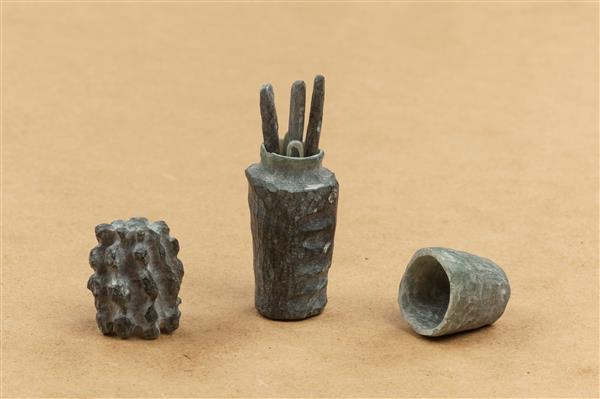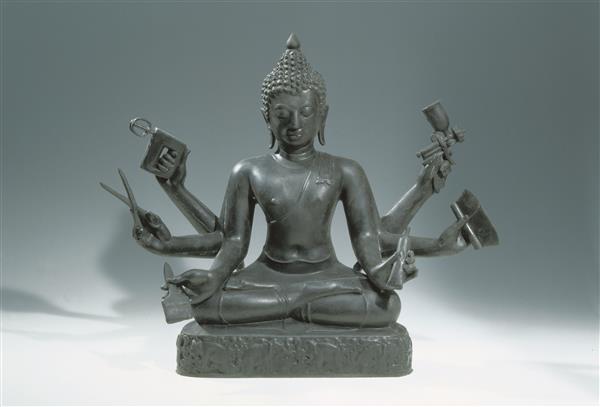Erziehung (Education)
Nino Sekhniashvili
42 ophite objects
dimensions variable, l 1–10 cm
2013
Acquisition 2014
Inv. No. 0267
Georgian Nino Sekhniashvili is a conceptually working artist who studied experimental sculpture with Rosemarie Trockel in Dusseldorf, and graphic reproduction at the art academy in Tiflis. A variety of different residency grants took her from the Akademie Schloss Solitude in Stuttgart to the Stiftung Binz39 in Zurich and to KulturKontakt in Vienna. She has been running Galerie Nectar since 2013 in the historical center of Tiflis, an “artist-run” space, with which she was invited to participate at Liste – Art Fair Basel in 2014. Using tremendous effort to make contemporary Georgian art more visible, she was able to counteract the total lack of relevant institutions in Tiflis. Conversely, this drew artists like Josef Dabernig, Helmut and Johanna Kandl, Christian Mayer and Sonia Leimer to the Caucasus – a region that fascinated ancient heros like Jason as much as the Austrian Nobel laureate Bertha von Suttner.
The direct exchange and cooperation is the reason that the equally rough and convincing work from Nino Sekhniashvilis is part of the evn collection. It exists in the area of conflicting social norms, local mythologies and occasionally, the power of destiny: in 2013, two well-respected Austrian artists, Catrin Bolt and Edith Payer, presented a symposium in the community of Bernstein in Burgenland. The place is known for its ophite quarries and the manufacture of ophite souvenirs. Nino Sekhniashvili was one of the many artists, from Austria, Hungary, Serbia and Georgia, invited. During the symposium, Sekhniashvili sat on a school bench in the Madonnenschlössl and carved “stone-age” utensils like knives and arrows from ophite factory leftovers. Later she used a Dremel, a multi-functioning tool that sands, saws, polishes and engraves, with which she was able to create refined objects like a sewing needle in a screw-top case, a thimble, various buttons, a comb, a cigarette-holder and a shot-glass out of the soft stone. She arranged the 42 objects in a display-case according to the classifications of an archaeological museum. The work is called Erziehung and asks the following question: Where does the every-day stop and art begin? When does art cease living and become ripe for the museum?
Brigitte Huck, 2015 (translation: Virginia Dellenbaugh)
Continue readingExhibitions
Paper, Rock, Scissors – Materials and Tools of Art , KinderKunstLabor für zeitgenössische Kunst, St. Pölten, 2025
Small Medium Large. Sculptures and Objects from the evn collection, evn sammlung, Maria Enzersdorf, 2022
Publications
evn collection. 95–2015 Jubilee, Vienna 2015, p. 318–323
Kunst im Madonnenschlössel 2013. Der unübliche Blick, Symposium für bildende Kunst, 26.08. – 08.09. 2013, Bernstein 2013, p. 40 ff

